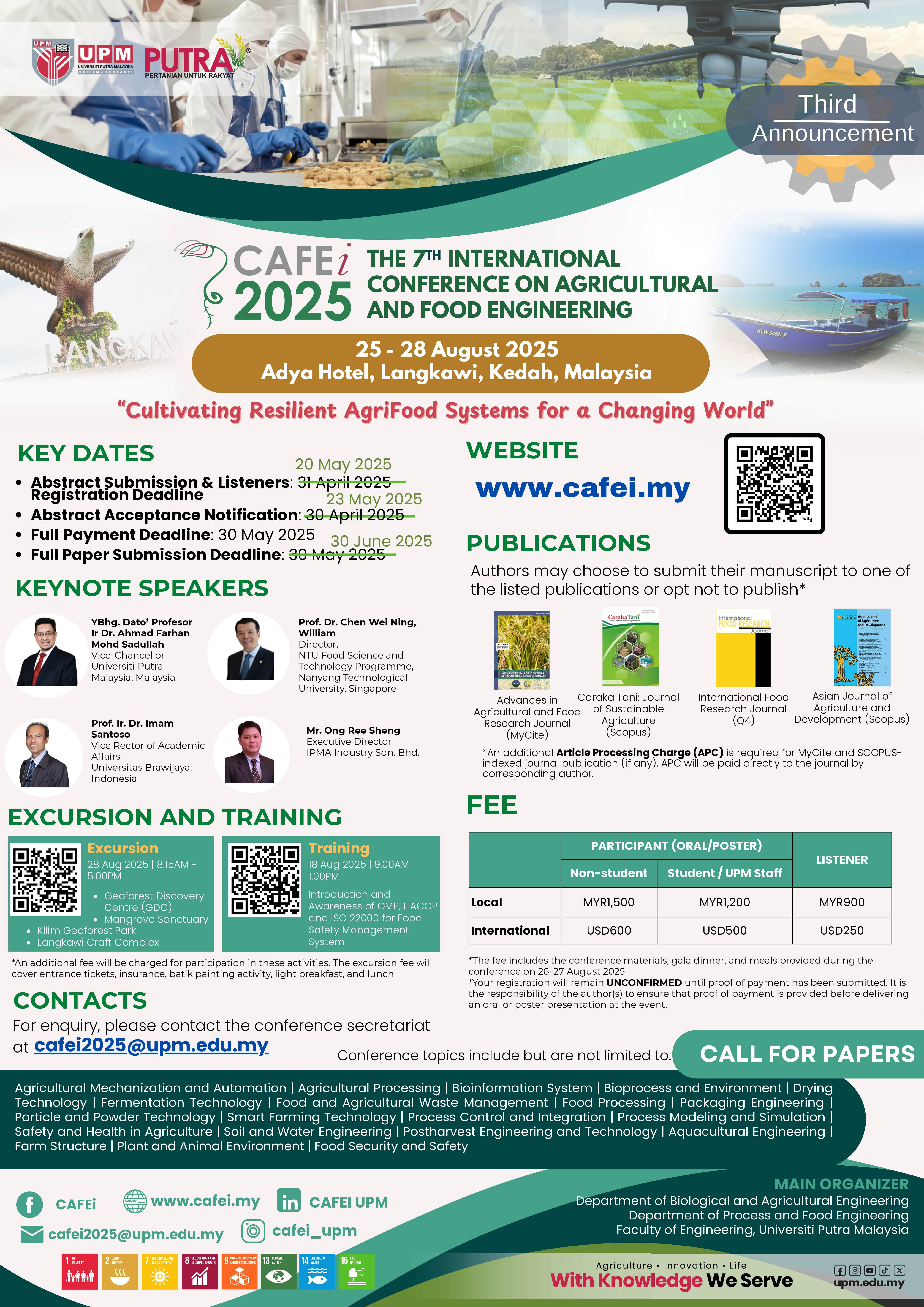Sensor-Based System for Mechanised Oil Palm Herbicide Spraying
DOI:
https://doi.org/10.36877/aafrj.a0000414Abstract
The application of an electronic control system embedded in machinery for oil palm plantation operation is a relatively new concept. The application is currently being pursued to overcome several issues and concerns, such as reducing workforce requirements, increasing productivity, and improving effective chemical utilisation. Technologies are revolving, and IR4.0 components are cost-effective to be embraced in the field. A study was carried out to evaluate the performance of a sensor-spraying system attached to a three-wheeler prime mover. A Lidar sensor was used for palm circle spraying activity. An average 25% chemical reduction was obtained by embracing the sensor-spraying compared to a manually triggered system. The technology's effective cost is about RM 3 per ha with almost 30 ha per day coverage area. Integrating the system with IoT provides traceability of the activity on a web-based application. Thus, the system could enhance the standard operating procedure of chemical spraying in the field. The Lidar spraying system could provide better operational cost savings, reduce chemical consumption, increase worker productivity, provide a better monitoring system, and reduce labour requirements for oil palm fields' general upkeep activity.
Downloads
Published
How to Cite
Issue
Section
License
Copyright (c) 2023 Mohd Azwan Mohd Bakri, Mohd Rizal Ahmad, Azahah Aris

This work is licensed under a Creative Commons Attribution-NonCommercial 4.0 International License.
Author(s) shall retain the copyright of their work and grant the Journal/Publisher right for the first publication with the work simultaneously licensed under:
Creative Commons Attribution-NonCommercial 4.0 International (CC BY-NC 4.0). This license allows for the copying, distribution and transmission of the work, provided the correct attribution of the original creator is stated. Adaptation and remixing are also permitted.

This broad license intends to facilitate free access to, as well as the unrestricted reuse of, original works of all types for non-commercial purposes.
The author(s) permits HH Publisher to publish this article that has not been submitted elsewhere.

.png)

.jpg)



